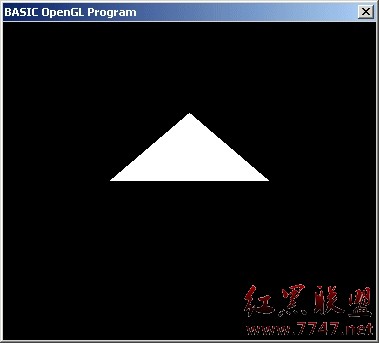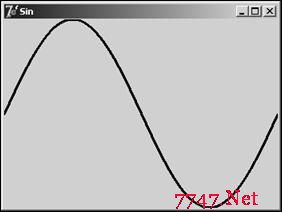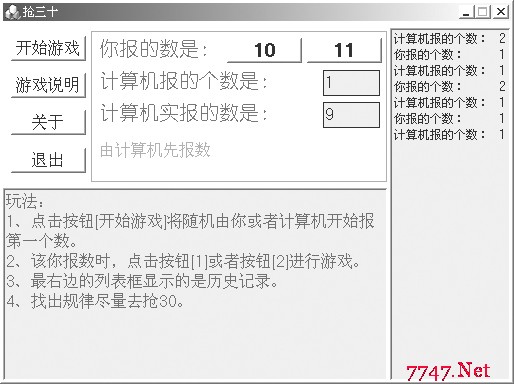检查DELPHI程序内存泄漏
一、使用步骤:
A)、将CheckMem.pas单元加入到工程中
B)、修改工程文件,将CheckMem.pas放到uses下的第一句
program Project1;
uses
CheckMem in CheckMem.pas,
Forms,
Unit1 in Unit1.pas {Form1} ;//其他单元文件
{$R *.RES}begin
Application.Initialize;
Application.CreateForm(TForm1, Form1);
Application.Run;
end.C)、正常的编译、运行应用程序
D)、退出应用程序后,将在应用程序目录下生成报告(如果有漏洞的话,如果没有则不生成)。
二、报告解读:
报告的内容:
===== Project1.exe,2004-6-11 15:36:55 =====
可用地址空间 : 1024 KB(1048576 Byte)
未提交部分 : 1008 KB(1032192 Byte)
已提交部分 : 16 KB(16384 Byte)
空闲部分 : 13 KB(14020 Byte)
已分配部分 : 1 KB(2024 Byte)
全部小空闲内存块 : 0 KB(232 Byte)
全部大空闲内存块 : 11 KB(11864 Byte)
其它未用内存块 : 1 KB(1924 Byte)
内存管理器消耗 : 0 KB(340 Byte)
地址空间载入 : 0%当前出现 3 处内存漏洞 :
0) 0000000000F33798 - 19($0013)字节 - 不是对象
1) 0000000000F337A8 - 18($0012)字节 - 不是对象
2) 0000000000F337B8 - 18($0012)字节 - 不是对象解读如下:
当前出现 3 处内存漏洞 :(有三个内存块分配了,但未释放。注意这里不是指对象变量或指针变量的地址,是对象的内存区域或指针指向的内存地址)
序号 未释放内存的地址 内存大小 是否是对象?如果是列出对象的Name及class并指出对象实现的单元文件名
0) 0000000000F33798 - 19($0013)字节 - 不是对象
三、测试例子:
测试用的代码:
unit Unit1;
interface
uses
Windows, Messages, SysUtils, Classes, Graphics, Controls, Forms, Dialogs,
StdCtrls;type
TForm1 = class(TForm)
Button1: TButton;
Button2: TButton;
procedure Button1Click(Sender: TObject);
procedure Button2Click(Sender: TObject);
private
{ Private declarations }
public
{ Public declarations }
aa:TstringList;
bb:tbutton;
end;var
Form1: TForm1;
def:pointer;
implementation{$R *.DFM}
procedure TForm1.Button1Click(Sender: TObject);
begin
aa:=TstringList.Create;
bb:=Tbutton.Create(nil);
aa.Add(abcdefdafasdfasdfasdfasdf);
application.MessageBox(pchar(aa.Strings[0]),asdf,MB_OK);
// aa.Free;
end;procedure TForm1.Button2Click(Sender: TObject);
var
p:Pointer;
begin
GetMem(def,10);
p:=def;
fillchar(p,10,$65);
application.MessageBox (def,aaa,MB_OK);
// freemem(def,10);
end;end.
我们先点击button1,然后退出。出现的报告如下:
当前出现 10 处内存漏洞 :
0) 0000000000F3109C - 67($0043)字节 - 不是对象
1) 0000000000F316A4 - 39($0027)字节 - 不是对象
2) 0000000000F33798 - 55($0037)字节 - (未命名): TStringList (48 字节) - In Classes.pas
3) 0000000000F337CC - 518($0206)字节 - : TButton (512 字节) - In StdCtrls.pas
4) 0000000000F339D0 - 42($002A)字节 - MS Sans Serif : TFont (36 字节) - In Graphics.pas
5) 0000000000F339F8 - 38($0026)字节 - (未命名): TSizeConstraints (32 字节) - In Controls.pas
6) 0000000000F33A1C - 30($001E)字节 - (未命名): TBrush (24 字节) - In Graphics.pas
7) 0000000000F33A38 - 38($0026)字节 - 不是对象
8) 0000000000F33A5C - 38($0026)字节 - 不是对象
9) 0000000000F33A80 - 42($002A)字节 - 不是对象把bb:=Tbutton.Create(nil);注释掉://bb:=Tbutton.Create(nil);再重新编译,然后运行,再点button1。出现的报告如下:
当前出现 3 处内存漏洞 :
0) 0000000000F33798 - 55($0037)字节 - (未命名): TStringList (48 字节) - In Classes.pas
1) 0000000000F337CC - 38($0026)字节 - 不是对象
2) 0000000000F337F0 - 42($002A)字节 - 不是对象说明了:一个对象未释放,将引起多处内存泄漏(因为一个对象可能包含多个子对象)
OK,我们再来测试button2(注意,这次我们不点击button1,只点击button2 一次),产生的报告如下:
当前出现 1 处内存漏洞 :
0) 0000000000F33798 - 19($0013)字节 - 不是对象再来一次,这次点击button2 三次:
当前出现 3 处内存漏洞 :
0) 0000000000F33798 - 19($0013)字节 - 不是对象
1) 0000000000F337A8 - 18($0012)字节 - 不是对象
2) 0000000000F337B8 - 18($0012)字节 - 不是对象这说明:对于每一个未释放的内存,CheckMem都将记录下来!再注意上面的未释放内存的地址是紧挨着的,因此如果看到这样的报告,可以猜想为一变量,多次分配,但未释放!
四、内存泄漏测试及修复的技巧:(翻译自MemProof帮助的部分内容,翻译得不好,请大家来信指导)
The following are a couple of tips that can be usefull when fixing leaks in an application :
下面的这些技巧对于修复应用程序的内存泄漏非常有用:
* First just launch the app and then close it. If even this action generates leaks, fix those leaks first. Only after the main leaks are fixed, you should go into specific functionality areas of the application.
*首先,运行应用程序然后马上退出。如果这样操作也产生内存泄漏,先修复这些漏洞。只有先修复这些主要的泄漏,你才能进行特定功能的测试。
* In your Delphi/C++Builder project options, remove as much forms as possible from the Auto-Create option. Create your forms dynamically.
*在你的delphi/C++Builder工程选项中,尽可能地不要使用自动创建窗体,你需要时再动态创建。
* 注意在循环中创建或分配的内存的代码。如果它们未释放,可能引起大量的内存泄漏。* Go for the biggest classes first - if you see a TMyFom <class> leaking, try to fix this one first instead of going after a tiny TFont class. Since a Form will usually contain a lot of other classes, with one shot you will have fixed a lot of contained leaks.
*先修复大的类,比如你看到TMyFom 类有泄漏,先解决它的问题,然后再解决像TFont 这样的小类。一个form类经常包含多个子类。修复一个form的未释放问题,你将解决大量该form包含的子对象未释的问题。
* Go for the easy fixes first. Some leaks fixes are very easy and obvious - if you fix the easy ones first, you will keep them out of your way.
*首先修复容易修复的漏洞。一些泄漏是非常容易被发现的,如果你先修复他们,你就不用老想着他们了。
附:CheckMem.pas单元
unit CheckMem; file://Add it to the first line of project uses
interface
procedure SnapCurrMemStatToFile(Filename: string);
implementation
uses
Windows, SysUtils, TypInfo;const
MaxCount = High(Word);var
OldMemMgr: TMemoryManager;
&n
补充:综合编程 , 安全编程 ,




